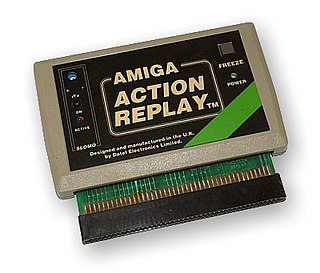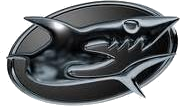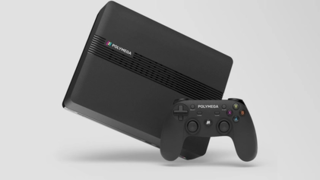Game Genie is a line of video game cheat cartridges originally designed by Codemasters, sold by Camerica and Galoob. The first device in the series was released in 1990 for the Nintendo Entertainment System, with subsequent devices released for the Super NES, Game Boy, Genesis, and Game Gear. All Game Genie devices temporarily modify game data, allowing the player to do things unintended by developers such as, depending on the game, cheating, manipulating various aspects of games, and accessing unused assets and functions. Five million units of the original Game Genie products were sold worldwide, and most video game console emulators for the platforms it was on feature Game Genie code support. Emulators that have Game Genie support also allow a near-unlimited number of codes to be entered whereas the actual products have an upper and lower limit, between three and six codes.
A regional lockout is a class of digital rights management preventing the use of a certain product or service, such as multimedia or a hardware device, outside a certain region or territory. A regional lockout may be enforced through physical means, through technological means such as detecting the user's IP address or using an identifying code, or through unintentional means introduced by devices only supporting certain regional technologies.

Action Replay is the brand name of a cheating device created by Datel. The Action Replay is available for many gaming systems including the Nintendo DS, Nintendo DSi, Nintendo 3DS, PlayStation Portable, PlayStation 2, GameCube, Game Boy Advance, and the Xbox. The name is derived from the first devices’ signature ability to pause the execution of the software and save the computer's state to disk or tape for future “replay”. The ability to manipulate the contents of memory in this paused state permitted the cheat functions for which the brand is now better known.

GameShark is the brand name of a line of video game cheat cartridges and other products for a variety of console video game systems and Windows-based computers. Currently, the brand name is owned by Mad Catz, which marketed GameShark products for the Sony PlayStation, Xbox, and Nintendo game consoles. Players load cheat codes from GameShark discs or cartridges onto the console's internal or external memory, so that when the game is loaded, the selected cheats can be applied.

Datel is a UK-based electronics and game console peripherals manufacturer. The company is best known for producing a wide range of hardware and peripherals for home computers in the 1980s, for example replacement keyboards for the ZX Spectrum, the PlusD disk interface and the Action Replay series of video game cheating devices.
Homebrew, when applied to video games, refers to software produced by hobbyists for proprietary video game consoles which are not intended to be user-programmable. The official documentation is often only available to licensed developers, and these systems may use storage formats that make distribution difficult, such as ROM cartridges or encrypted CD-ROMs. Many consoles have hardware restrictions to prevent unauthorized development.
A video game accessory is a distinct piece of hardware that is required to use a video game console, or one that enriches the video game's play experience. Essentially, video game accessories are everything except the console itself, such as controllers, memory, power adapters (AC), and audio/visual cables. Most video game consoles come with the accessories required to play games out of the box : one A/V cable, one AC cable, and a controller. Memory is usually the most required accessory outside of these, as game data cannot be saved to compact discs. The companies that manufacture video game consoles also make these accessories for replacement purposes as well as improving the overall experience. There is an entire industry of companies that create accessories for consoles as well, called third-party companies. The prices are often lower than those made by the maker of the console (first-party). This is usually achieved by avoiding licensing or using cheaper materials. For the mobile systems like the PlayStation Portable and Game Boy iterations, there are many accessories to make them more usable in mobile environments, such as mobile chargers, lighting to improve visibility, and cases to both protect and help organize the collection of system peripherals to. Newer accessories include many home-made things like mod chips to bypass manufacturing protection or homemade software.
Xploder is a brand of game cheats and multimedia devices for games consoles, similar to Action Replay. Xploder products have been released for Dreamcast, PS2, PlayStation, PSP, Xbox, GameCube, Nintendo 64, Game Boy, Game Boy Advance, PC and others. Support for the PS3, Xbox 360 and Nintendo Wii started in 2006–2007. Xploder products are often bundled with accessories for game consoles, such as Lexar's Memory Sticks for the PSP, or the X-Link cable with the PS2 V5 Media Centre version. Newer versions for the Xbox 360 and PlayStation 3 allow users to download saved games from the Internet.
Import gamers are a subset of the video game player community that take part in the practice of playing video games from another region, usually from Japan where the majority of games for certain systems originate.
Various accessories for the PlayStation 3 video game console have been produced by Sony and third-party companies. These include controllers, audio and video input devices like microphones, video cameras, and cables for better sound and picture quality.
This is a list of video game accessories that have been released for the Game Boy handheld console and its successors. Accessories add functionality that the console would otherwise not have.

The Dreamcast VGA Box is an accessory for Sega's Dreamcast video game console that allows it to connect to a video display such as a computer monitor or an HDTV set through a VGA port. Because the Dreamcast hardware can produce a VGA-compatible video signal natively, this connection provides improved picture quality compared to standard composite video or S-Video connections, along with support for progressive scan video.

The PlayStation 3 technical specifications describe the various components of the PlayStation 3 (PS3) video game console.

The PlayStation 2 (PS2) is a home video game console developed and marketed by Sony Computer Entertainment. It was first released in Japan on 4 March 2000, in North America on 26 October 2000, in Europe on 24 November 2000, and in Australia on 30 November 2000. It is the successor to the PlayStation, as well as the second installment in the PlayStation brand of consoles. As a sixth-generation console, it competed with Nintendo's GameCube, Sega's Dreamcast, and Microsoft's Xbox. It is the best-selling video game console of all time, having sold over 155 million units worldwide, nearly triple the combined sales of the Dreamcast, GameCube, and Xbox.
Nintendo 64 accessories are first-party Nintendo hardware—and third-party hardware, licensed and unlicensed. Nintendo's first-party accessories are mainly transformative system expansions: the 64DD Internet multimedia platform, with a floppy drive, video capture and editor, game building setup, web browser, and online service; the controller plus its own expansions for storage and rumble feedback; and the RAM-boosting Expansion Pak for big improvements in graphics and gameplay. Third-party accessories include the essential game developer tools built by SGI and SN Systems on Nintendo's behalf, an unlicensed SharkWire online service, and unlicensed cheaper counterparts to first-party items. In the fifth generation of video game consoles, the Nintendo 64 had a market lifespan from 1996 to 2002.
GameCube accessories include first-party releases from Nintendo, and third-party devices, since the GameCube's launch in 2001.

The Dingoo is a handheld gaming console that supports music and video playback and open game development. The system features an on-board radio and recording program. It was sold to consumers in three colors: white, black, and pink. It was released in February 2009 and had sold over 1 million units.

Le Mans 24 Hours is a video game released for the PlayStation, Game Boy Color, Dreamcast, PlayStation 2, and Microsoft Windows. The Dreamcast version was ported and published by Sega in Japan on 15 March 2001, while the PlayStation 2 version was ported and published by the same company on 13 June. Based on the famous 24 hours of Le Mans race in France, the player is invited to race the entire 24-hour endurance course or take part in a simpler arcade mode. The game also featured tracks such as Bugatti Circuit, Brno Circuit, Road Atlanta, Suzuka Circuit, Donington Park and Circuit de Catalunya, as well as a weather and night system.

Polymega is a home video game console developed by American company Playmaji, Inc. It is a retro gaming console offering backwards compatibility with several CD-based and cartridge-based platforms: PlayStation, TurboGrafx-CD, Neo Geo CD, Sega CD, Sega Saturn, Nintendo Entertainment System (NES), Sega Genesis, Sega 32X, Super Nintendo Entertainment System (SNES), and Nintendo 64. It includes a built-in CD drive, while separate add-ons known as Element Modules provide support for cartridge-based games.








